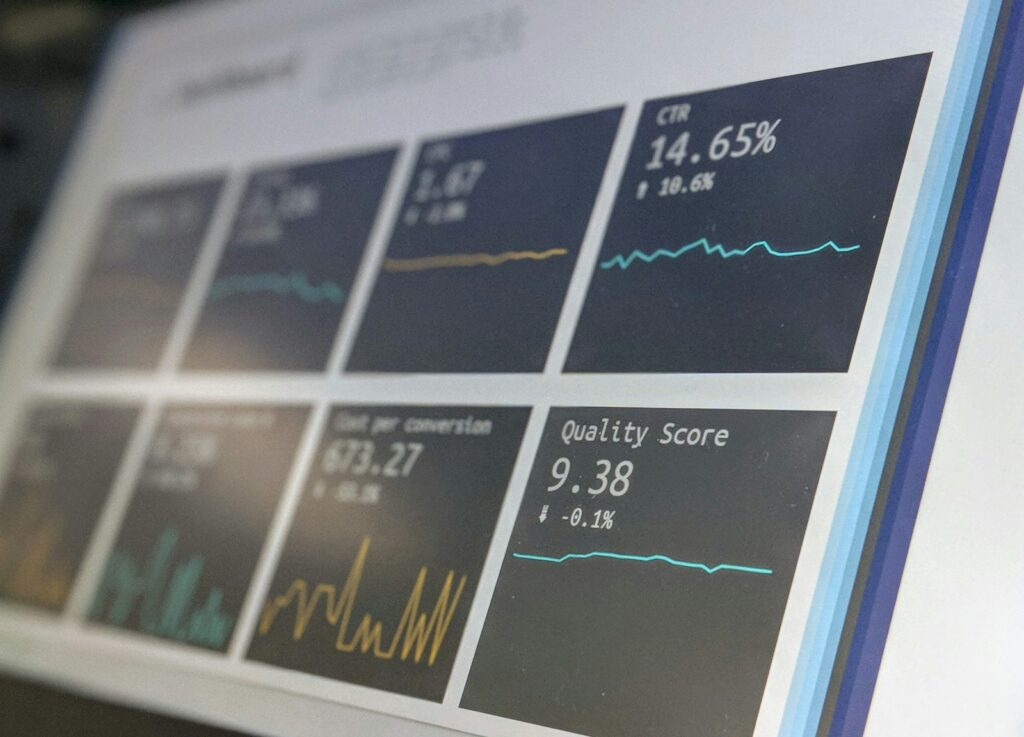
In an era defined by pervasive digital connectivity, the sanctity of personal data has emerged as a paramount concern, sparking regulatory interventions of historic proportions. Few events underscore this more dramatically than the Federal Trade Commission’s (FTC) record-breaking $5 billion penalty levied against Facebook, Inc. This monumental fine, announced on July 24, 2019, stands not merely as a punitive measure but as a stark declaration of the serious consequences awaiting major corporations that falter in their commitment to user privacy.
This penalty against Facebook represents the largest ever imposed on any company for violating consumers’ privacy, a figure nearly 20 times greater than the previous worldwide record in privacy or data security penalties. It also ranks among the largest penalties ever assessed by the U.S. government for any violation, signaling a significant shift in the regulatory landscape concerning how social media giants manage the vast repositories of personal information entrusted to them by billions of users. The case against Facebook revealed a pervasive pattern of deceptive practices that systematically undermined user control over private data, despite the company’s explicit assurances.
Our comprehensive examination delves into the intricate details of this landmark settlement, exploring the specific violations that led to the staggering fine, the far-reaching new restrictions imposed on Facebook’s operations, and the innovative compliance mechanisms designed to reshape the company’s privacy culture from the board level down. This in-depth analysis offers crucial insights into the evolving responsibilities of technology companies and the fundamental rights of their users in the digital age, setting a precedent for future enforcement actions and corporate governance.
1. **The FTC’s Record-Breaking $5 Billion Penalty Against Facebook**The Federal Trade Commission’s imposition of a $5 billion penalty on Facebook, Inc. marked an unprecedented moment in consumer privacy enforcement. This colossal sum was not just a headline-grabbing figure; it established a new benchmark for accountability in the digital realm. On July 24, 2019, the FTC formally announced this settlement, directly addressing charges that Facebook had violated a prior 2012 FTC order through deceptive practices related to user privacy controls.
The magnitude of this financial penalty is particularly striking when placed in historical context. It is explicitly stated to be the largest ever imposed on any company for violating consumers’ privacy worldwide, dwarfing previous fines by nearly 20 times. This statistic alone highlights the FTC’s intent to send an unequivocal message to the entire industry that consumer privacy is a serious and non-negotiable obligation for companies handling personal data.
Furthermore, the penalty’s scale extends beyond privacy violations, positioning it among the largest fines ever assessed by the U.S. government for any type of violation. This demonstrates a robust governmental commitment to enforcing regulatory compliance across various sectors. The settlement served as a critical inflection point, emphasizing that the FTC is prepared to utilize its full authority to protect consumer information and ensure that companies adhere to their privacy promises.

2. **Violations Leading to the 2019 FTC Order: Deceiving Users and Undermining Privacy Choices**The genesis of the $5 billion fine lies in Facebook’s alleged pattern of deceiving users regarding their ability to control the privacy of their personal information. Despite consistently reassuring its billions of global users that they held agency over their data, the FTC charged that Facebook systematically undermined these very choices. This created a profound disconnect between user expectations and the company’s actual data handling practices.
FTC Chairman Joe Simons articulated this core issue, stating, “Despite repeated promises to its billions of users worldwide that they could control how their personal information is shared, Facebook undermined consumers’ choices.” This statement encapsulates the regulatory body’s central contention: Facebook’s conduct directly contradicted its public assurances. Assistant Attorney General Jody Hunt further reinforced this perspective, emphasizing the Department of Justice’s commitment to preventing social media companies from misleading individuals about their personal information’s use.
The complaint filed on behalf of the Commission alleged that Facebook employed deceptive disclosures and settings to subvert users’ privacy preferences, a direct violation of its prior 2012 FTC order. These tactics enabled the company to share personal information with third-party applications utilized by users’ Facebook “friends,” often without the explicit awareness or consent of the users themselves. Many individuals, the FTC contended, remained unaware of this information sharing, thus failing to take necessary steps to opt out, highlighting a critical lapse in transparent communication and user control mechanisms.

3. **The Unprecedented New Restrictions and Corporate Accountability**Beyond the substantial financial penalty, the settlement order imposed unprecedented new restrictions on Facebook’s business operations, fundamentally altering its corporate structure to enhance accountability for privacy decisions. The FTC’s primary goal was not merely to punish past infractions but to instigate a profound cultural shift within the organization, ensuring future compliance by embedding privacy considerations at every level of decision-making.
A cornerstone of these new restrictions is the mandate to restructure Facebook’s approach to privacy from the corporate board level downwards. This includes the establishment of an independent privacy committee within Facebook’s board of directors. This critical change removes the unfettered control previously exercised by CEO Mark Zuckerberg over user privacy decisions, aiming to introduce external checks and balances into the company’s governance. Members of this independent committee are to be appointed by an independent nominating committee and can only be removed by a supermajority vote of the Facebook board, solidifying their autonomy.
Accountability is also significantly improved at the individual level. The order requires Facebook to designate compliance officers specifically responsible for its privacy program. These officers are subject to the approval of the new board privacy committee and can only be removed by that committee, insulating them from direct influence by the CEO or other Facebook employees. Furthermore, both CEO Mark Zuckerberg and the designated compliance officers must independently submit quarterly certifications to the FTC confirming the company’s adherence to the mandated privacy program, along with an annual certification of overall compliance. The severe implication is that any false certification will subject these individuals to potential civil and criminal penalties, establishing a direct line of personal responsibility rarely seen in such corporate settlements.
Read more about: The Corporation Unmasked: An Insider’s Deep Dive into Its History, Power, and Controversies

4. **Enhanced External Oversight and Product Privacy Reviews**To further safeguard user privacy and ensure ongoing compliance, the FTC’s settlement significantly strengthens external oversight mechanisms over Facebook. This enhanced scrutiny is designed to provide an independent and rigorous evaluation of the company’s privacy practices, moving beyond internal assurances to verifiable external verification. It marks a critical step towards maintaining transparency and accountability in a notoriously complex digital ecosystem.
Central to this external oversight is the expanded role of an independent third-party assessor. This assessor’s ability to evaluate the effectiveness of Facebook’s privacy program and identify any gaps has been significantly enhanced. Crucially, the assessor’s biennial assessments of Facebook’s privacy program must now be based on independent fact-gathering, sampling, and testing, rather than relying primarily on assertions or attestations from Facebook management. The order explicitly prohibits the company from making any misrepresentations to this assessor, who, importantly, can be approved or removed by the FTC, ensuring their true independence.
The independent assessor is also required to report directly to the new privacy board committee on a quarterly basis, establishing a direct line of communication and accountability that bypasses traditional corporate hierarchies. Furthermore, the order empowers the FTC to utilize discovery tools provided by the Federal Rules of Civil Procedure to actively monitor Facebook’s compliance, providing a legal framework for ongoing regulatory vigilance. As a foundational element of Facebook’s order-mandated privacy program, which extends to WhatsApp and Instagram, the company must now conduct a comprehensive privacy review of every new or modified product, service, or practice before its implementation, meticulously documenting decisions about user privacy. The designated compliance officers are tasked with generating quarterly privacy review reports, which must be shared with the CEO, the independent assessor, and made available to the FTC upon request. This proactive approach aims to prevent privacy issues from arising in the first place, rather than addressing them reactively. Additionally, Facebook is now required to document incidents where data of 500 or more users has been compromised, detailing its efforts to address such incidents, and delivering this documentation to both the Commission and the assessor within 30 days of discovery. This ensures swift and transparent reporting of data breaches, a crucial step in consumer protection.
Read more about: 14 Essential Lessons Every First-Year Entrepreneur Needs to Master for Sustainable Success
5. **Specific New Privacy Requirements Imposed on Facebook**The FTC’s settlement order against Facebook introduced a series of highly specific new privacy requirements, targeting key areas of concern regarding user data management and platform security. These mandates go beyond general principles, imposing concrete obligations designed to prevent a recurrence of past violations and elevate the overall standard of privacy protection across Facebook’s ecosystem.
One significant requirement dictates that Facebook must exercise greater oversight over third-party applications. This includes the authority to terminate app developers who fail to certify their compliance with Facebook’s platform policies or cannot adequately justify their need for specific user data. This measure directly addresses the historical vulnerabilities that allowed third-party apps to access extensive user information, often without stringent checks or enforcement.
Furthermore, the order explicitly prohibits Facebook from using telephone numbers obtained solely to enable a security feature, such as two-factor authentication, for advertising purposes. This specific restriction tackles the deceptive practice where security-conscious users inadvertently contributed to targeted advertising databases, ensuring that data collected for one stated purpose is not repurposed without explicit consent. Regarding facial recognition technology, Facebook is now mandated to provide clear and conspicuous notice of its use and, critically, obtain affirmative express user consent before any use that materially exceeds its prior disclosures.
In terms of foundational security, Facebook must establish, implement, and maintain a comprehensive data security program. This is a broad requirement that necessitates a robust framework for protecting user data from unauthorized access or breaches. More granularly, the company is also compelled to encrypt user passwords and regularly scan its systems to detect whether any passwords are stored in plaintext, a critical vulnerability that can lead to widespread account compromise. Finally, to prevent credential stuffing attacks and protect users’ other online identities, Facebook is prohibited from asking for email passwords to other services when consumers sign up for its own services.

6. **Alleged Violations of the 2012 FTC Order**The 2019 settlement and its monumental penalty stemmed directly from alleged violations of a previous 2012 FTC settlement order with Facebook, highlighting a concerning pattern of non-compliance. The earlier order had expressly prohibited Facebook from misrepresenting the privacy or security of consumers’ personal information and restricted the extent to which it shared personal information, such as names and dates of birth, with third parties. It also mandated that Facebook maintain a reasonable privacy program to safeguard user information.
However, the FTC alleged that Facebook brazenly violated this 2012 order by deceiving users through the persistent sharing of data from users’ Facebook friends with third-party app developers. This occurred even when those friends had configured more restrictive privacy settings, thereby nullifying their privacy choices. A critical instance cited was Facebook’s actions in May 2012, when it added a disclosure to its central “Privacy Settings” page about friend data sharing with apps; however, just four months after the 2012 order was finalized in August 2012, Facebook allegedly removed this disclosure while continuing the problematic data sharing practice.
Further alleged deceptive practices included the launch of services like “Privacy Shortcuts” in late 2012 and “Privacy Checkup” in 2014. These tools purported to help users manage their privacy settings, yet they allegedly failed to disclose that even with the most restrictive sharing settings, Facebook could still share user information with friends’ apps unless users specifically opted out via the “Apps Settings Page.” The FTC found no disclosure of this crucial detail anywhere on the Privacy Settings page or the “About” section of profile pages.
Despite a public promise in April 2014 to stop allowing third-party developers to collect data about app users’ friends, Facebook separately informed developers they could continue this practice until April 2015 if their apps were already on the platform. The FTC alleged that Facebook did not fully cease sharing user information with third-party apps used by their Facebook friends until at least June 2018. The complaint also accused Facebook of improperly policing app developers, not screening them before granting access to vast amounts of user data, and inconsistently enforcing its policies, often based on whether Facebook financially benefited from such arrangements. Finally, Facebook was also alleged to have misrepresented users’ control over facial recognition technology, with the “Tag Suggestions” setting turned on by default despite an updated data policy suggesting users would need to opt-in, and deceptively using phone numbers obtained for security features for advertising purposes, in violation of the FTC Act.

7. **The Cambridge Analytica Scandal: A Catalyst for Action**The Cambridge Analytica scandal stands as a pivotal moment in the broader narrative of data privacy breaches and regulatory enforcement, serving as a powerful catalyst for increased scrutiny on social media platforms. In a related, but distinct, development to the Facebook settlement, the FTC also announced separate law enforcement actions against data analytics company Cambridge Analytica, its former Chief Executive Officer Alexander Nix, and Aleksandr Kogan, the app developer who collaborated with the company. These actions alleged that they employed false and deceptive tactics to harvest personal information from millions of Facebook users.
Kogan and Nix ultimately agreed to a settlement with the FTC, which imposed restrictions on their future business conduct, underscoring the legal consequences for individuals and entities directly involved in such data exploitation. The scandal itself came to public light through a whistleblower in 2018, who revealed that Cambridge Analytica had “exploited Facebook to harvest millions of people’s profiles,” a practice Facebook had reportedly been aware of three years prior to the public revelation. This harvested information was infamously used to influence U.S. voters during Donald Trump’s 2016 presidential campaign and the Pro-Brexit campaign in the UK.
The global repercussions of the Cambridge Analytica scandal were evident in subsequent settlements, such as the one reached in Australia. There, a $50 million AUD settlement was announced with Meta, Facebook’s parent company, directly addressing the fallout from the scandal. This settlement aimed to provide payment to an estimated 311,127 individuals. Eligibility for this compensation was defined for parties who had a Facebook account between November 2015 and December 2015, spent more than 30 days in Australia during that period, and either personally installed the “This is Your Digital Life” app or had a Facebook friend who did. This multi-jurisdictional enforcement demonstrated the wide-ranging impact and regulatory response to this particular data breach event, cementing its place as a significant driver for changes in data governance.”

8. **The Irish Data Protection Committee’s €251 Million Fine Against Meta**Beyond the monumental FTC penalty, Meta has faced significant financial repercussions from other global regulatory bodies, underscoring widespread data governance concerns. In a notable enforcement, the Irish Data Protection Commission (IDPC) issued a substantial €251 million fine against Meta in 2022. This stemmed from a personal data breach on Facebook in 2018, demonstrating continuous regulatory vigilance over the tech giant’s privacy practices.
The breach originated from a critical vulnerability within Facebook’s “View As” feature. This flaw allowed malicious actors to exploit the system, gaining unauthorized access to users’ access tokens and taking over accounts. The incident impacted approximately 29 million global users, including three million within the EU and EEA, with compromised data encompassing full names, emails, phone numbers, location, dates of birth, religious affiliations, and even children’s personal data.
The IDPC’s ruling held Meta directly responsible for multiple GDPR infringements. Meta was cited for failing to integrate proper data protection measures during system design, not adhering to data minimization, and not disclosing all pertinent breach information timely. DPC Deputy Commissioner Graham Doyle emphasized this failure “can expose individuals to very serious risks and harms.”

9. **Yahoo’s Landmark $50 Million Settlement for Historic Breaches**Beyond social media, traditional internet services have also contended with staggering data breach consequences, exemplified by Yahoo’s significant settlement. The company agreed to pay $50 million in damages and provide two years of complimentary credit-monitoring services to approximately 200 million individuals whose email addresses and other personal information were compromised. This restitution was a direct outcome of a federal court settlement, underscoring long-term liability for historical security failures.
These breaches, occurring in 2013 and 2014 but undisclosed until 2016, cast a significant shadow over Yahoo’s corporate trajectory. The security lapse led to a substantial reduction in the company’s valuation, as its brand was tarnished. The original $4.83 billion deal to sell its digital services to Verizon Communications was discounted by $350 million, directly reflecting the diminished value attributable to the breach.
The Yahoo intrusion was immense, impacting an estimated 3 billion accounts in total, with some breaches linked by the FBI to Russian state-sponsored actors. The specific settlement, reached in a San Jose, California, court, addressed roughly 1 billion accounts, encompassing an estimated 200 million people within the U.S. and Israel whose data was exposed between 2012 and 2016.
Eligible Yahoo account holders who incurred losses could claim compensation. The settlement outlined $25 per hour for time spent addressing breach-related issues, allowing up to 15 hours ($375) for documented losses and up to five hours ($125) for undocumented inconveniences. Premium email account holders were also eligible for a 25 percent refund, with independent lawyers receiving up to $37.5 million in fees and expenses.

10. **The Timehop App Breach and Cloud Security Vulnerabilities**Data breaches are not exclusive to tech behemoths; smaller, widely used applications also face critical security challenges that can expose millions of users. The social media nostalgia app Timehop, for instance, publicly disclosed a significant breach affecting 21 million users, revealing a common vulnerability in cloud security practices.
The incident compromised phone numbers, names, and email addresses. It also highlighted a more insidious threat: potential access to users’ social accounts. Malicious actors could theoretically access Timehop’s “access tokens,” which permit the app to display old social media posts. While Timehop quickly terminated these tokens and found no evidence of social media data access, this theoretical possibility underscored the compromise’s severity.
The breach’s root cause was inadequate security measures on its cloud computing account. The company explicitly admitted an “unauthorised user” gained access because the account “had not been protected by multifactor authentication.” This critical lapse in robust authorization and access controls served as a stark reminder of MFA’s fundamental importance across all digital infrastructure, especially as the breach commenced in December yet only came to light in July.

11. **The Alleged National Public Data Breach: Unreported and Massive Scale**Recent revelations concerning the alleged National Public Data (NPD) breach highlight a disturbing trend where data incidents of immense scale emerge through unconventional channels, often remaining unreported. A class-action complaint filed in Florida brought to light the potential compromise of nearly three billion records, indicating a breach of unprecedented magnitude demanding immediate consumer vigilance.
The complaint details the alleged exposure of highly sensitive personal information meticulously collected by NPD, a public records data provider. This compromised data reportedly includes full names, current and past addresses spanning decades, Social Security numbers (SSNs), and information about parents, siblings, and other relatives, some deceased for years. The vast scope and depth of this data aggregation present a profound risk.
Critically, the complaint asserts that NPD “scraped” this extensive information from non-public sources without consent, raising significant ethical and legal questions. The aggregation of these disparate data points constructs a comprehensive personal profile, vastly amplifying the potential for sophisticated identity theft and various financial frauds.
The NPD incident is particularly concerning due to the alleged lack of official notification. Unlike typical data breaches, where companies are mandated to inform consumers, no notices were reportedly sent. The primary plaintiff discovered the breach through an alert from their identity theft protection service, underscoring how compromises are often learned indirectly and belatedly. This aligns with reports of a hacker group, USDoD, claiming to sell 3 billion records on the dark web, impacting US, Canadian, and British citizens, reinforcing severe risks, particularly with breached Social Security numbers.

12. **Common Mechanisms of Data Breaches: Understanding the Threats**To effectively mitigate risks, a fundamental understanding of data breach origins is paramount. A data breach is a security incident where sensitive data is illicitly copied, transmitted, viewed, stolen, or utilized by an unauthorized party. Attackers primarily seek financial gain, selling datasets on the dark web or leveraging information for identity theft and fraud. Large, consolidated records are particularly valuable, facilitating elaborate fraudulent schemes.
One prevalent method is phishing and social engineering, where malicious actors trick individuals into inadvertently disclosing sensitive information like passwords through deceptive communications. Concurrently, stolen or weak credentials pose a significant vulnerability; hackers exploit password combinations from previous breaches—credential stuffing—to gain unauthorized access to other systems, especially with simple or reused passwords.
Software vulnerabilities represent a critical technical entry point, as cybercriminals exploit security flaws in outdated software, applications, or operating systems for unauthorized network access. Similarly, misconfigured databases and cloud services pose substantial risk when sensitive data is inadvertently left exposed on inadequately secured servers, rendering it publicly accessible.
Finally, insider threats, whether intentional or unintentional, constitute a distinct category. These incidents are caused by current or former employees with legitimate access to sensitive information. While some are malicious, others result from human error, negligence, or lack of awareness, underscoring comprehensive internal security and employee training.
Read more about: Rethink Your Shares: 14 Unsettling Facts About Social Media Privacy in the Digital Age

13. **Immediate Steps to Take When Personal Data, Especially SSNs, is Compromised**In the aftermath of a potential data breach, particularly one involving highly sensitive information like Social Security numbers, consumers are eager to ascertain if their data has been exposed. However, extreme caution is imperative; never input SSN or other critical data into unknown websites claiming breach checks, as these are often scams. The most secure approach utilizes a trusted identity monitoring service that safely scans the dark web and breach databases without requiring sensitive personal details directly.
Upon suspecting an SSN compromise, the first critical action is to **place a security freeze on your credit**. Contact all three major credit bureaus—Equifax, Experian, and TransUnion—to restrict access to your credit report. A credit freeze is exceptionally effective, significantly complicating identity thieves’ ability to open new accounts or lines of credit. Simultaneously, **set up fraud alerts**, which mandate creditors verify identity before new credit; this can be initiated for free for one year by contacting just one bureau.
It is also crucial to **change your passwords** across all online accounts, prioritizing email, financial, and government services. Employ strong, unique passwords for each, ideally generated by a password manager. Furthermore, enabling two-factor authentication (2FA) wherever possible adds a vital second security layer, requiring an additional verification step beyond the password, hindering unauthorized access.
Beyond these immediate digital defenses, continuous vigilance is paramount. **Monitor your financial accounts and credit reports** closely for any suspicious activity, actively utilizing free weekly credit reports from AnnualCreditReport.com. Should identity theft be discovered, promptly **file a report with the Federal Trade Commission (FTC)** at IdentityTheft.gov. Considering an **IRS Identity Protection PIN (IP PIN)** offers an additional safeguard against tax refund fraud, while regularly checking a “my Social Security” account allows oversight of benefits for unauthorized activity.
In an increasingly interconnected world, where personal data is both a commodity and a vulnerability, the responsibility for safeguarding one’s digital identity rests significantly with the individual. The array of protective measures discussed, from rigorous password hygiene and multi-factor authentication to proactive credit monitoring and security freezes, empowers consumers to establish formidable defenses. Embracing these strategies moves beyond merely reacting to the inevitable breach, fostering a resilient posture that ensures personal information remains secure, preserving financial integrity and peace of mind in the face of evolving cyber threats.






